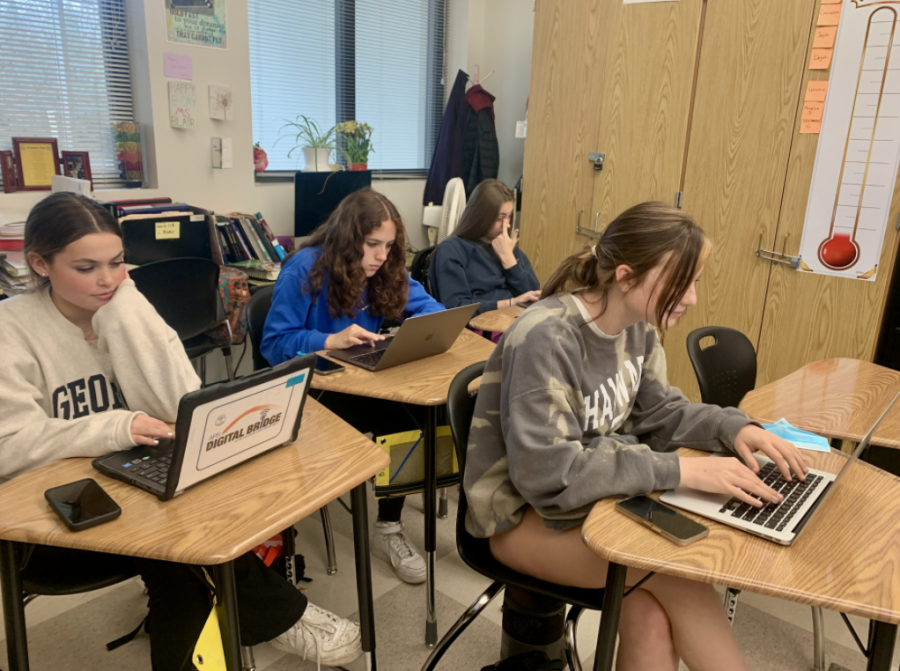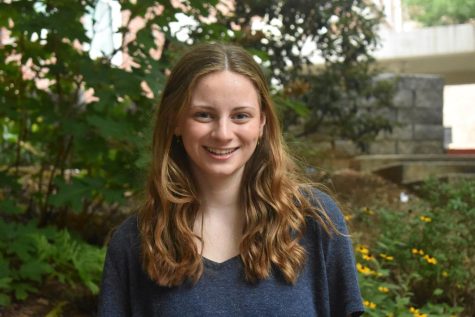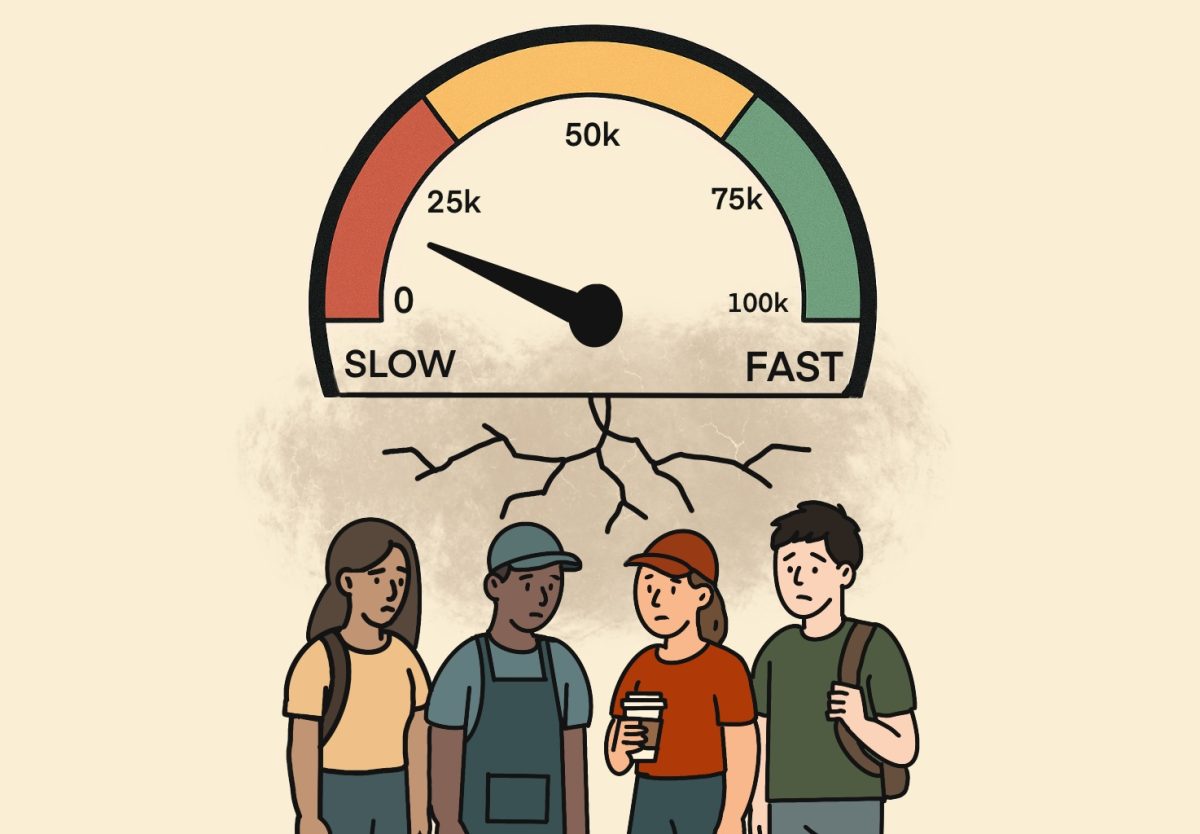Yearbook struggles with limited underclassmen involvement
Staffers (left to right) Winnie Snyder, Emilia Weinrobe, Mia Pilot and Mia Garrett (front) work on meeting deadlines to produce the yearbook.
March 10, 2022
With eight seniors graduating and only two juniors continuing in the class next year, the yearbook pathway is reaching out to recruit underclassmen. The current seniors have been training staffers on everything yearbook-related, in order to ensure the transition to next year is smooth sailing.
“We only have two juniors coming back next year,” senior and Co-Editor in Chief Daniela Restrepo said. “For [junior] Emilia Weinrobe, who’s going to be next year’s editor, we have been training her for the entire year on basically how to do everything. We teach her all of the design concepts, and we are helping her design the cover for next year.”
Junior Emilia Weinrobe believes it is vital to make sure the staff is well trained before the seniors graduate, because they are the ones with the most knowledge on how to efficiently create the yearbook.
“Having a limited number of rising seniors will affect the yearbook because the seniors are really the students that know a lot about how the yearbook works and what is expected,” Weinrobe said. “If there aren’t that many, that means the future seniors are going to have to train the underclassmen even more than usual to recognize mistakes, how to use the platform and so many other things as well.”
Current seniors have also been working on teaching juniors how to effectively train underclassmen for future years, along with Advisor Gayla Blair.
“When we recruit people, since we’re not going to be here next year to train them, we basically have to teach Emilia and Ms. Blair on how to train them,” Restrepo said. “The way we teach them, is we give them templates to work with on the website, and then show them basic story concepts. We give them around 300 words to write and then they have captions. We also have a caption quiz that we do where they basically just write example captions for random pictures.”
Blair believes that having a limited number of people that truly enjoy and are passionate about the yearbook does more justice than an entire classroom that is not fully committed.
“Truth be told, it’s a lot of writing, but if you get at least five to ten people who really want to work, you can do it,” Blair said. “You don’t have to have a whole 25 students but that helps to spread the load out. With ten people who really want to work, you can produce a yearbook.”
One problem yearbook has revolving recruiting is that many don’t know that joining yearbook is an option.
“To recruit underclassmen, we go to the journalism classes,” Restrepo said. “But it doesn’t always work, so that’s a big problem we have. A lot of people don’t know you can join yearbook — I didn’t even know about it until a week before I joined. We’re also going to start getting people straight from Howard [Middle School]. We sent the school materials, and we are going to talk to them for their eighth grade orientation and say things like, ‘come join if you like writing, if you like taking pictures,’ and stuff like that.”
Recruitment efforts range from classroom presentations to Tik Tok videos.
“Like most organizations at school, we have different things, for example, the rising ninth grade presentations and we make videos, we did a Tik Tok that we’ve shown on there and the kids enjoy doing that,” Blair said. “I’ve actually contacted Howard Middle School and asked them to recommend students. I would love to be able to filter out and have some type qualifiers to be in the program right now. Right now, I would take people that are just interested.”
Having a limited number of rising seniors will affect next year’s yearbook workload. Staffers will have to take on more pages to fulfill the deadlines.
“Since it’s only two people right now, we really don’t know how much they’ll be able to write,” Restrepo said. “Right now it’s around 250 pages in the book and each of us gets four things to work on in the whole year, other than the editors who get more. So really, the big problem is workload.”








